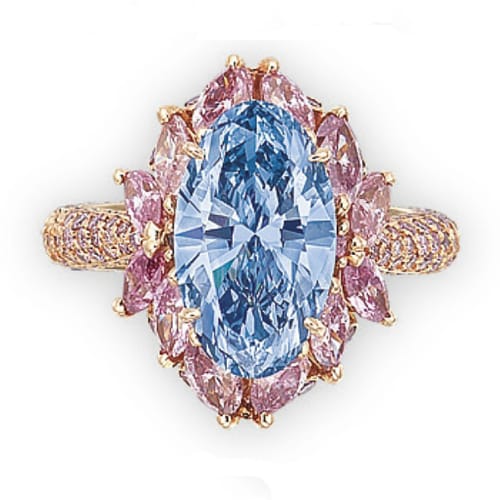
When it comes to gemstones, one of the most captivating aspects is their ability to reflect and refract light, creating a dazzling display of brilliance and sparkle. Moissanite, a popular alternative to diamonds, has gained immense popularity for its unique optical properties, including its renowned rainbow sparkle. In this article, we will delve into the technicality of moissanite’s rainbow sparkle and compare it to the characteristics of diamonds in the eternal “Moissanite vs Diamond” debate.
Understanding Moissanite’s Rainbow Sparkle
- Dispersion: Dispersion, also known as fire, refers to a gemstone’s ability to separate white light into its spectral colors. Moissanite possesses a remarkable dispersion that exceeds that of diamonds. This exceptional quality allows moissanite to disperse light into a vibrant spectrum of colors, creating a captivating rainbow effect. The play of colors in moissanite can be truly mesmerizing, adding an enchanting allure to any piece of jewelry.
- Refractive Index: Refractive index (RI) measures the bending of light as it passes through a gemstone. Moissanite’s RI is higher than that of diamonds, contributing to its exceptional brilliance. The higher RI of moissanite allows light to bend more, resulting in greater internal reflection and a greater amount of light returning to the viewer’s eye. This enhances the gemstone’s overall brightness and scintillation, contributing to its captivating rainbow sparkle.
- Double Refraction: Moissanite exhibits a unique optical phenomenon called double refraction. Unlike diamonds, which are isotropic and have a single refractive index, moissanite is anisotropic and has double refraction. This means that when light passes through a moissanite gemstone, it splits into two rays,resulting in additional facets and a more brilliant display of light. The double refraction in moissanite contributes to its distinctive rainbow sparkle and creates a captivating visual experience.
Moissanite vs Diamond: The Rainbow Sparkle Showdown
- Brilliance: While diamonds are known for their exceptional brilliance, moissanite’s rainbow sparkle is unparalleled. The combination of moissanite’s high dispersion, refractive index, and double refraction results in a stunning display of colors that dance and shimmer in the light. This rainbow sparkle gives moissanite a unique character that sets it apart from diamonds.
- Color Play: Moissanite’s rainbow sparkle is particularly noticeable in certain lighting conditions, such as natural sunlight or bright indoor lighting. The interplay of colors adds depth and dimension to the gemstone, creating a captivating visual effect. Diamonds, on the other hand, exhibit a brilliant white light reflection, lacking the distinct rainbow spectrum of moissanite.
- Personal Preference: The choice between moissanite and diamonds ultimately depends on personal preference. While some individuals appreciate the classic brilliance of diamonds, others are drawn to the mesmerizing rainbow sparkle of moissanite. Each gemstone offers a unique aesthetic appeal, allowing individuals to choose the one that best aligns with their personal style and desired visual effect.
Conclusion
In the ongoing debate of “Moissanite vs Diamond,” the technicality of moissanite’s rainbow sparkle sets it apart as a captivating alternative. Moissanite’s exceptional dispersion, high refractive index, and double refraction create a unique play of colors that dazzles the eye. While diamonds possess their own charm and brilliance, moissanite’s rainbow sparkle offers a distinct aesthetic that appeals to many.
Ultimately, the choice between moissanite and diamonds comes down to personal preference, allowing individuals to express their unique style and appreciate the beauty of these remarkable gemstones.
